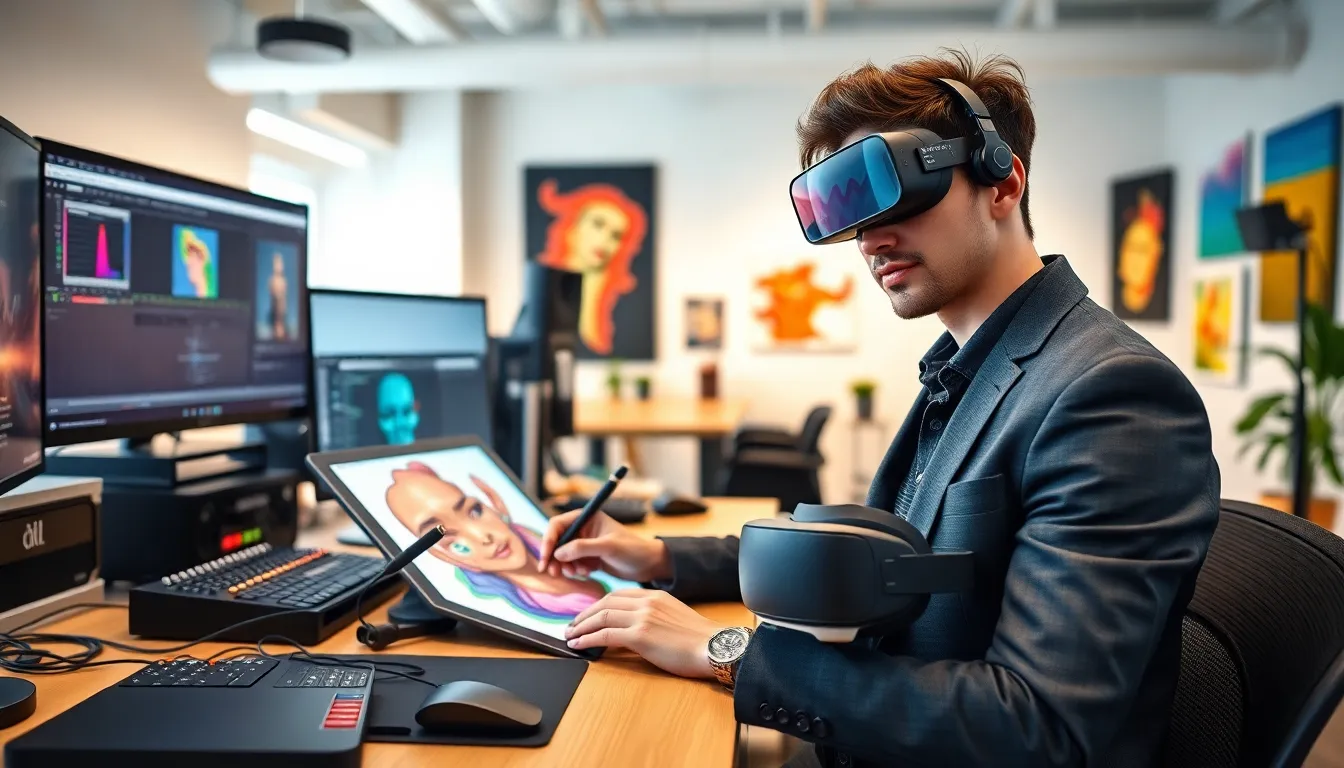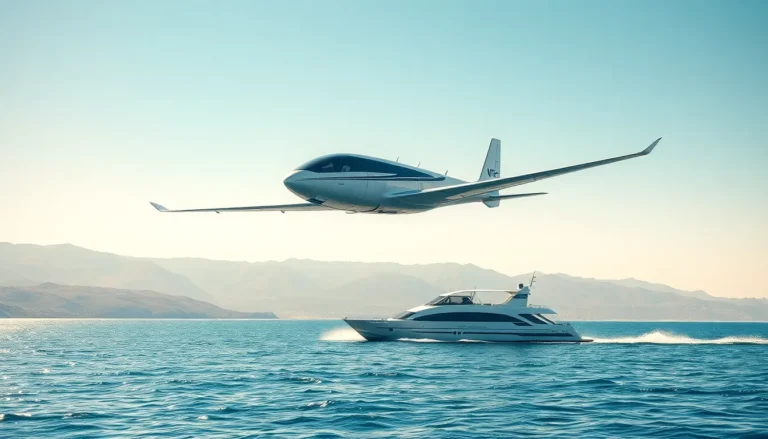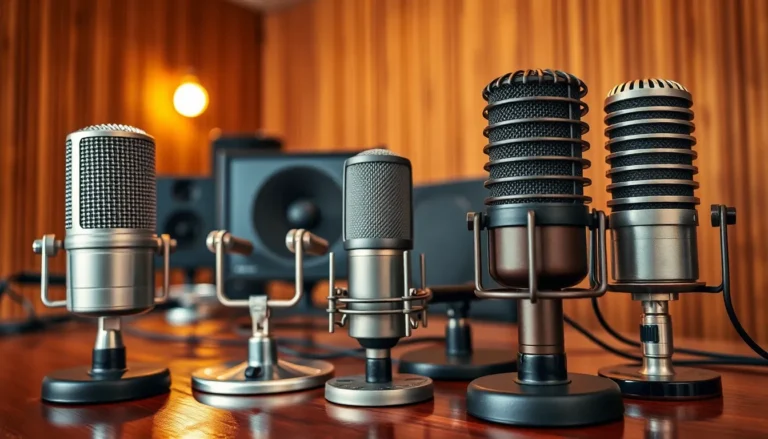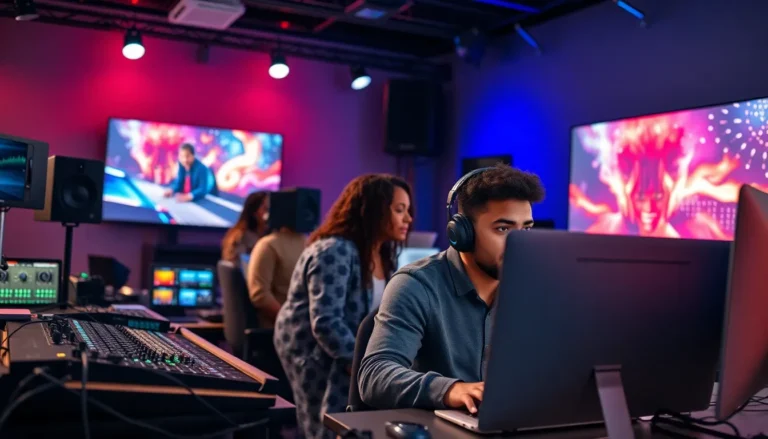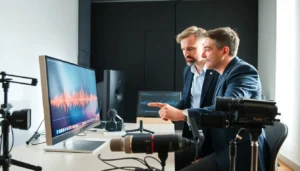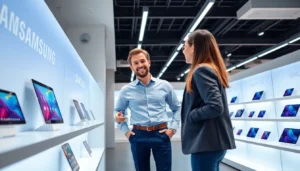Imagine a world where the lines between art and technology blur so seamlessly that they create a vibrant tapestry of innovation. Welcome to the exciting intersection of arts, audio/video technology, and communications. In today’s digital age, this synergy is not just a trend: it’s a transformation that continuously shapes how we perceive, create, and communicate. Whether you’re an artist, a tech enthusiast, or just someone who appreciates the magic of creativity, you’re in for a treat. Get ready to dive deep into a realm where pixels dance, sounds resonate, and storytelling transcends boundaries.
Table of Contents
ToggleThe Intersection of Arts and Technology

Historical Overview
Art and technology have danced together for centuries, embarking on a journey that began way before the internet, smartphones, and social media. Think about the Renaissance: it was an era where great minds like Leonardo da Vinci and Michelangelo not only created timeless masterpieces but also invented techniques that laid the groundwork for modern art. Fast forward to the 20th century, where the introduction of photography and film further revolutionized how art was consumed and appreciated.
Modern Developments
Today, this intersection has evolved dramatically. Artists now have access to a plethora of digital tools that can enhance their creative processes. Whether it’s through digital painting software that mimics traditional brushes or coding languages that generate visuals based on algorithms, the fusion of arts and technology is a powerful cocktail of creativity and innovation. It’s not just about creating art anymore: it’s about redefining what art can be.
Key Technologies in Arts Creation
Digital Tools for Artists
Digital tools have become the new canvases for artists. Software such as Adobe Creative Suite, Procreate, and Corel Painter deliver a smorgasbord of options for creating stunning visuals. Artists can experiment with layers, digital brushes, and effects that would have once taken hours or even days to achieve with traditional media. The beauty of these tools lies in their ability to foster creativity while allowing for instant revisions and sharing.
Virtual Reality and Augmented Reality in Art
Virtual Reality (VR) and Augmented Reality (AR) are taking the world of art by storm. Artists are now crafting immersive experiences that invite audiences to step inside their creations. Imagine donning a VR headset and wandering through a whimsical 3D world painted by your favorite artist or using AR to bring static artworks to life with added dimensions. This technology not only enhances engagement but also provides a new platform for storytelling and interactivity, engaging audiences like never before.
Trends in Audio/Video Technology
Emerging Technologies in Audio Production
The landscape of audio production is buzzing with innovation. From high-fidelity sound recording to virtual audio workstations (DAWs), music production has become more accessible and creative than ever. Artists can produce high-quality tracks from the comfort of their homes, utilizing tools like Pro Tools and Ableton Live to manipulate sound in groundbreaking ways. New technologies such as spatial audio also promise to elevate the listening experience, creating enveloping soundscapes that draw listeners deeper into the music.
Video Streaming and Its Impact on Communication
Video streaming has fundamentally changed how artists communicate their work. Platforms such as YouTube, Vimeo, and Twitch allow creators to share their art with a global audience in real time. This shift has democratized content creation, enabling artists to build communities and interact with their followers directly. Whether it’s via live art sessions, tutorials, or behind-the-scenes looks, video streaming has made artistic communication more dynamic and engaging than ever before.
The Role of Communication in the Arts
Storytelling Across Different Media
At the heart of every piece of art lies a story waiting to be told. Different media, from traditional painting to modern installations, each offer unique ways to convey narratives. Artists use music, visuals, and performance to weave intricate tales and evoke emotional responses, demonstrating that communication is essential in engaging the audience.
The Importance of Audience Engagement
Engaging with audiences is increasingly vital in today’s art world. Through social media, artists can receive immediate feedback and build relationships with their followers. Campaigns that prioritize audience participation not only enhance the art itself but also create a sense of belonging. Whether it’s through interactive installations or community-driven projects, the collaboration between artists and their audiences is reshaping how art is experienced.
Future Trends in Arts and Technology
Sustainability in Arts Technology
Looking forward, sustainability is becoming a critical focus in the arts. Artists and technologists are exploring eco-friendly materials, energy-efficient productions, and the use of digital platforms to reduce waste. As the world becomes more aware of its environmental impact, the arts are stepping up, seeking innovative methods to create without compromising the planet’s future.
The Globalization of Artistic Communication
Globalization is another trend significantly affecting the arts. Artists are no longer restricted by geographical boundaries: they can connect with audiences worldwide. Collaborative projects can happen in real-time across continents, blending cultural influences into a vibrant global quilt. This interconnectedness not only enriches innovation but also facilitates diverse expressions of creativity in arts, audio, video, and communication.

